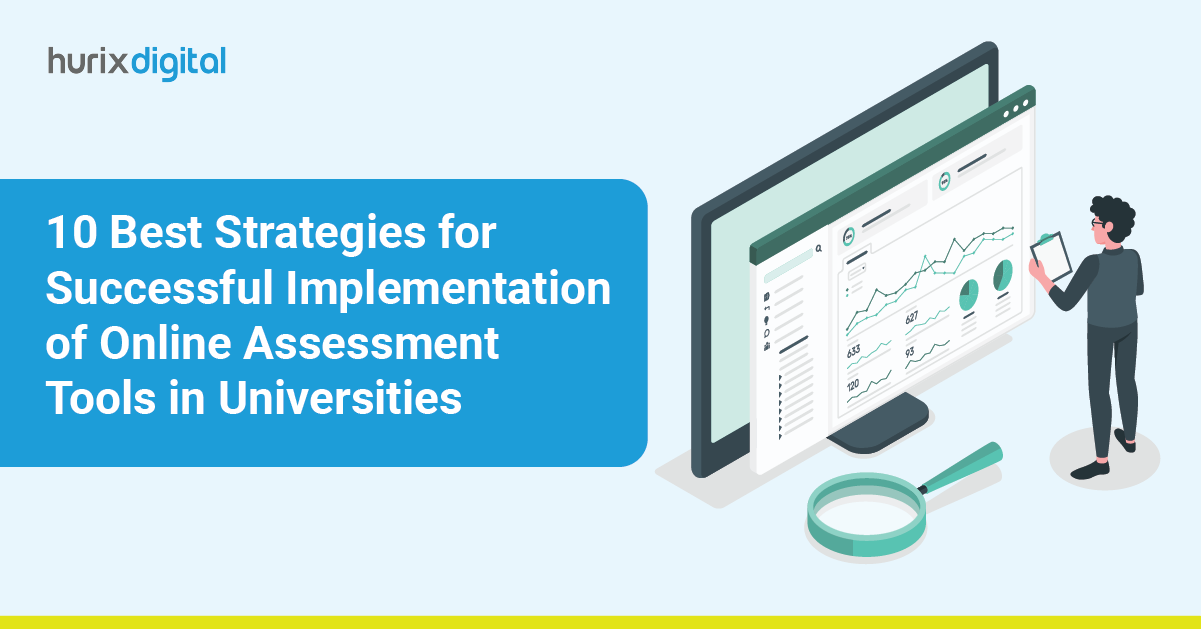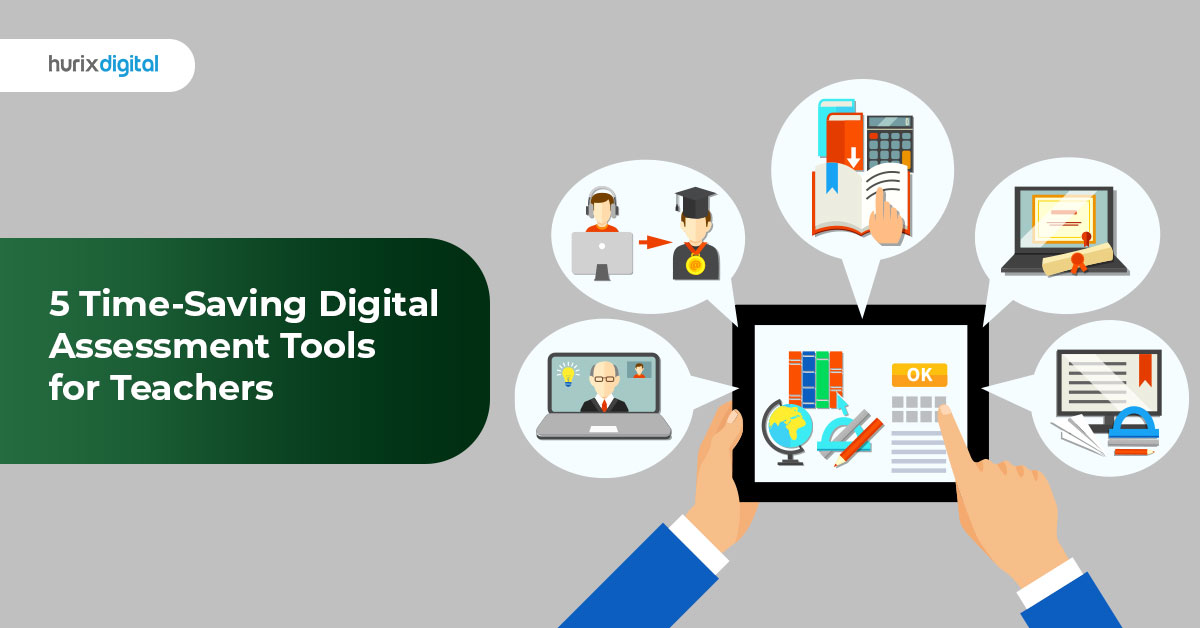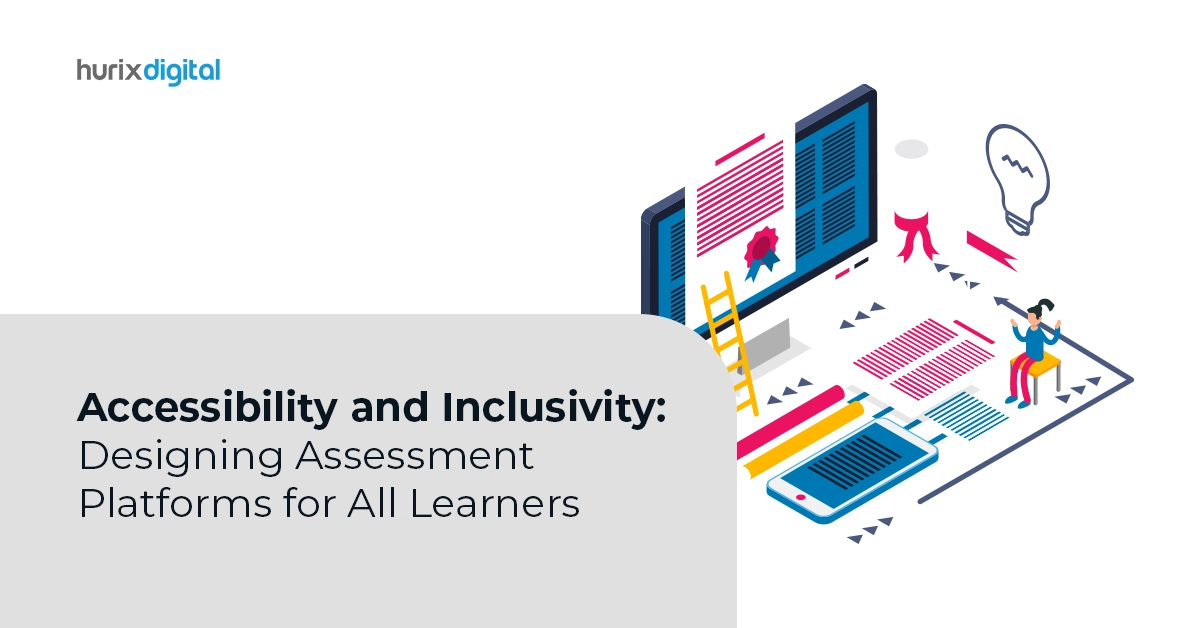
10 Best Strategies for Successful Implementation of Online Assessment Tools in Universities
Summary
Digital assessment platforms revolutionize education with remote evaluation, personalized learning, and large-scale testing, offering efficiency, scalability, and data-driven insights through accessible, integrated, and transparent tools.
Digital assessment platforms are revolutionizing education as they facilitate creativity and assessment practices more effectively. These tools allow instructors to evaluate their students remotely. Student learning becomes visible, and more time is available for inculcating personalized education.
As the eLearning market is expected to cross USD 1 trillion by 2028, digital assessment platforms take center stage in the evolution of educational landscapes.
The growing cloud computing market, projected to reach USD 2297.37 billion by 2032, has also boosted e-assessment systems. Cloud-based assessment tools allow universities to manage large-scale testing securely with increased flexibility, ensuring an easy shift from traditional paper tests to online testing.
Thus, it becomes imperative to understand the challenges and best practices for integration that empower universities to maximize their potential to use online assessment resources. Let us refer to this guide!
Table of Contents:
- Benefits of Digital-Based Assessment Platforms
- Kinds of Digital Assessment Tools Used in Digital Evaluation Systems
- 10 Best Practices for Integration of Digital Assessment Platforms
- Offer Role-Based Access for Users
- Ensure Effective Integration with the Learning Management System
- Process Question and Answer Shuffling
- Maintain Standardization and Fairness
- Should be Aligned with Learning Outcomes
- Apply Remote Proctoring Solutions
- Ensure Accessibility for All Students
- Maintain Data Privacy and Security
- Use Technology Wisely
- Utilize Rubrics for Transparent Grading
- Conclusion
Benefits of Digital-Based Assessment Platforms
There are numerous benefits of online assessment platforms for schools and institutions:
1. Better Insights
With the help of e-assessment tools, educators can have better insight into students’ learning behavior and academic development. Deep insight helps identify student strengths and areas for learning gaps to provide better-targeted support.
2. Efficiency and Time Management
Online assessment services automatically reduce the administrative burden associated with traditional tests, including printing and distributing paper. Grading is also enhanced, thus freeing up instructors to teach students better.
3. Authentic Applications
Through authentic tasks online assessment, students can be engaged in real-life or virtual tasks that ensure critical thinking and problem-solving skills. This helps them attain expertise in course content.
4. Low-Cost
The successful implementation of e-assessment platforms reduces the costs for institutions as they can be implemented as a standalone product that is compatible with both mobile and web. The cost-effectiveness makes it an attractive option for universities looking to modernize their assessment process.
5. Data-Driven Insights and Prompt Feedback
One of the most significant characteristics of the online assessment tools is immediate feedback. Students are given immediate feedback after they have undertaken any examination so that they can identify their strengths and weaknesses.
6. Scalability and Efficiency
Since large universities have thousands of students, it is a great advantage that e-assessment platforms provide scalability to such institutes. The fact that almost 44% of traditional small businesses and 74% use cloud infrastructure implies that implementing assessment platforms in universities merely becomes scalable and highly efficient as cloud systems would allow testing with large populations without any degradation in performance.
Thousands of students sitting in one exam without any degradation in performance is something that such a platform would easily handle.
Also Read: Budgeting for AI – Cost Considerations for Educational Technology Leaders
Kinds of Digital Assessment Tools Used in Digital Evaluation Systems
There are diverse types of assessments that can be incorporated into digital evaluation systems:
- Diagnostic Assessment: This is done before the start of a course or module to establish the students’ prior knowledge. It assists instructors in setting specific teaching approaches according to the knowledge gained by the students.
- Formative Assessment: The assessment and measurement undertaken within the learning process to ascertain student progress and provide feedback for improvement towards better understanding and performance.
- Interim Assessment: This is usually done at the district or state levels by comparing groups of students and assessing general progress at intervals during the academic year.
- Benchmark Assessment: This is a more intensive assessment that measures the academic progression of an entire group of students. Benchmarking universities enables them to track overall education performance.
- Summative Assessment: Students take this test at the end of an academic term or year to determine their success and mastery of the subject matter. This is the final summation of a student’s work.
10 Best Practices for Integration of Digital Assessment Platforms
Here are key strategies for the integration of online assessment tools and resources:
1. Offer Role-Based Access for Users
For an online evaluation system to be successful, it should be able to provide clear access based on the user’s roles. The web ensures that granting different accesses to students, teachers, and administrators would ensure a smooth run and keep its data safe. For example:
- Students: Can see access to results of their examinations, syllabus, and updates made on the site.
- Teachers: Can see how the students are performing; they will be able to know which areas to focus on and point out the problem areas to help their students learn better.
- Administrators: Control all test scheduling, proctoring, and result processing centrally so they are better capable of dealing with assessments
2. Ensure Effective Integration with the Learning Management System
Most digital assessment platforms are integrated with Learning Management Systems, which include the following:
- Tools for course management that assist in organizing content and assessments.
- Collaboration features enable easy communication and information sharing.
- Safe for cloud storage solutions that store assessment data and reports.
3. Process Question and Answer Shuffling
To prevent malpractice, a faculty person may shuffle the questions and answers so that several versions of the same test exist. This is one of the best practices for integration, ensuring fairness and reducing the chances of cheating during exams.
4. Maintain Standardization and Fairness
Successful implementation of the e-assessment process is only possible if it is fair. Digital assessment platforms must provide standardized test formats, scoring criteria, and modes of evaluation. These would eliminate biases and ensure that each student measures against the same yardstick.
5. Should be Aligned with Learning Outcomes
Online assessments must be designed according to the desired outcome for each course. The link between assessment and course objectives would then be transparent to students, making them aware of what such a process intends to discover.
An instructor must use various assessment tools to accommodate different question types through formative and summative assessments.
6. Apply Remote Proctoring Solutions
Digital assessment platforms must offer a remote proctoring facility for reliable delivery of online assessments. This includes:
- Audio and image proctoring of the students so that there is vigil during the exam.
- Real-time tracking and AI-based analytics to pick potential issues.
- Rapid report generation of assessment to provide immediate feedback to the students and faculty.
7. Ensure Accessibility for All Students
Implementing digital assessments should include accessibility for all students, which is the bare minimum. Nearly 15% of K12 students in the United States receive special education, making accessibility the most critical issue for these platforms.
- Accessibility should be maintained, especially catering to students with different learning needs, such as:
- Option to enlarge text for students who need bigger texts.
- Screen readers can read the text as audio to help students whose reading skills and visual abilities fail them.
- Closed captions and transcripts are available for students whose hearing will not let them hear the audio.
- Keyboard navigation and voice commands are tools for students who cannot use conventional input devices.
Implementing platforms that are WCAG compliant also complies with legislation and opens up learning opportunities for students.
8. Maintain Data Privacy and Security
Security is the chief concern for a university while implementing e-assessment platforms. Universities must consider the following security features before providing for the safety of students’ data and records. Only trust assessment platforms that:
- Implement web-based application firewalls to prevent malicious code from accessing a website
- Conduct periodic application penetration testing of vulnerabilities
- Maintain compliance with the various regulations – such as GDPR
- Prevent DDoS attacks to ensure student assessment is accessible to the target users.
- Create data storage and accessing protocols with restrictions on access to sensitive information.
9. Use Technology Wisely
The best assessment platform should be user-friendly for both instructors and students.
Cloud systems also help eliminate the administrative burden that has become too much of a challenge for educators-74% of those who feel overwhelmed.
This should enable multiple kinds of assessments: multiple-choice questions (MCQ), descriptive answers, and group projects, among others. It will also ensure automatic test assembly so that the assembling of exams will become easier; instant feedback and real-time results will improve student involvement; and data-driven insights will keep teachers informed of student progress and areas for improvement.
10. Utilize Rubrics for Transparent Grading
Rubrics clarify what counts toward success for students and teachers alike. They spell out what students need to know about assessment criteria. In doing so, rubrics banish ambiguity and the mystery of how assignments are graded, making grading and management clearer and easier to control.
Also Read: Top Tips for Effective Multilingual Proofreading in Educational Content Creation
Conclusion
Digital assessment platforms have changed university education as they offer an efficient, scalable means of assessing student performance. Online assessments allow institutions to benefit from real-time feedback, data-driven insights, and improved access-something both the student and instructor can appreciate.
Are you ready to revolutionize your institution’s assessment process? Partner with us at Hurix Digital for expert solutions and seamlessly implement them.

Currently serving as the Vice President of Technology Delivery Operations at HurixDigital, a prominent global provider of digital content and technology solutions for publishers, corporations, and educational institutions. With over 16 years of experience spanning EdTech and various domains, I hold certification as a SCRUM Product Owner (CSPO). My expertise includes operations, finance, and adept people management skills.







